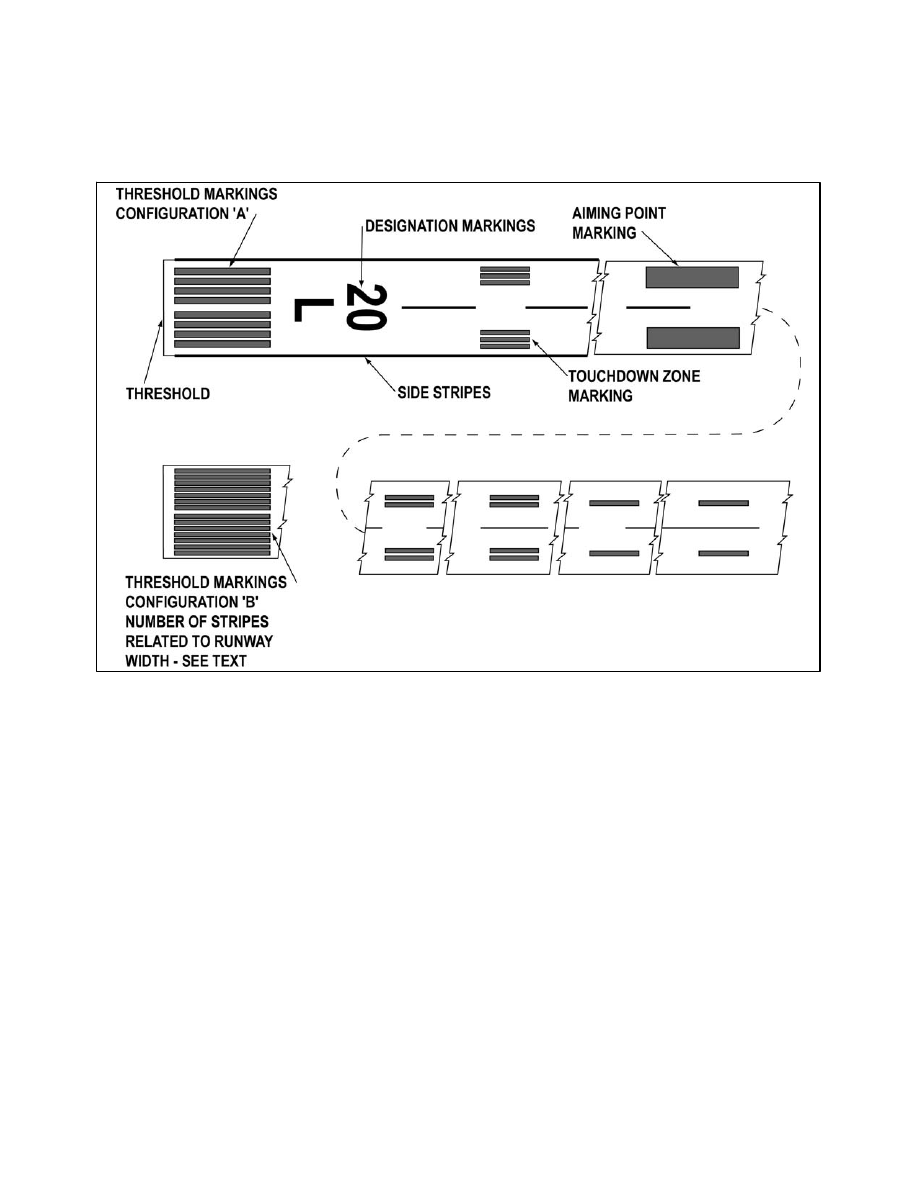
AIM
4/3/14
2−3−2
Airport Marking Aids and Signs
FIG 2
−3−1
Precision Instrument Runway Markings
b. Runway Designators.
Runway numbers and
letters are determined from the approach direction.
The runway number is the whole number nearest
one-tenth the magnetic azimuth of the centerline of
the runway, measured clockwise from the magnetic
north. The letters, differentiate between left (L),
right (R), or center (C), parallel runways, as
applicable:
1.
For two parallel runways “L” “R.”
2.
For three parallel runways “L” “C” “R.”
c. Runway Centerline Marking.
The runway
centerline identifies the center of the runway and
provides alignment guidance during takeoff and
landings. The centerline consists of a line of
uniformly spaced stripes and gaps.
d. Runway Aiming Point Marking.
The aiming
point marking serves as a visual aiming point for a
landing aircraft. These two rectangular markings
consist of a broad white stripe located on each side of
the runway centerline and approximately 1,000 feet
from the landing threshold, as shown in FIG 2−3−1,
Precision Instrument Runway Markings.
e. Runway Touchdown Zone Markers.
The
touchdown zone markings identify the touchdown
zone for landing operations and are coded to provide
distance information in 500 feet (150m) increments.
These markings consist of groups of one, two, and
three rectangular bars symmetrically arranged in
pairs about the runway centerline, as shown in
FIG 2−3−1, Precision Instrument Runway Markings.
For runways having touchdown zone markings on
both ends, those pairs of markings which extend to
within 900 feet (270m) of the midpoint between the
thresholds are eliminated.